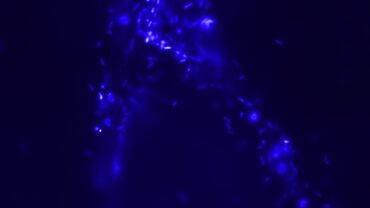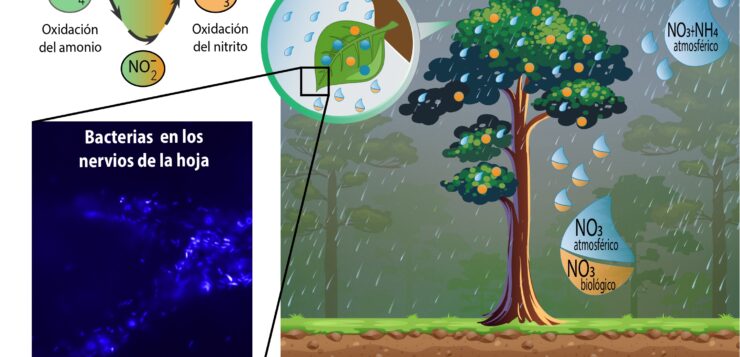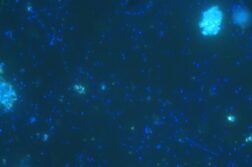A new international study, involving CEAB-CSIC, has demonstrated the crucial function of microorganisms present on tree leaves in removing nitrogen compounds from the air. The study, published in Nature Geoscience, has confirmed that trees are not only excellent at absorbing carbon dioxide but also play a surprising role in retaining and transforming other pollutants such as hydrogenated compounds.
The scientific team, led by Rossella Guerrieri, a Marie Curie researcher at CREAF during the research, has discovered the presence of bacteria of the genus Nitrospira on tree leaves that interact with nitrogen compounds present in the atmosphere (ammonia and ammonium, highly polluting) and transform them into nitrates. This transformation process is called “nitrification.”
The research was conducted in European forests in slightly contaminated areas (in Scandinavian countries), moderately contaminated areas (Mediterranean region), and highly contaminated areas (Central Europe).
To find these bacteria, the research group used the innovative Next-Generation Sequencing (NGS) technique, which involves massive sequencing of environmental DNA to detect the presence of new organisms on tree leaves of different heights (collected by professional climbers in all countries) and in rainwater samples collected inside and outside the forest.
Microbiological analyses were precisely carried out by researchers from CEAB-CSIC. Their work has been framed within the INTERACTOMA and AEROSMIC projects, funded by the Ministry of Science and Innovation, which explore the dispersion of microscopic life forms through the atmosphere and their ecological and environmental effects on the functioning of different ecosystems on Earth.

The research tasks of the entire scientific team have confirmed the presence of microorganisms on leaves that were previously believed to only exist in soils and water. It has been demonstrated that they are responsible for the transformation of the ammonia reaching the tree canopies from the atmosphere, mainly through rain, into nitrates.
The lead author of the article, Rossella Guerrieri (currently, researcher at the Università di Bologna) , explains, “Previous research already showed that tree canopies, thanks to the cuticle of the leaves and their morphological structure (for example, the presence of hairs), perform a passive filtering function. But I wasn’t convinced that it was a simple and passive mechanism. Aware of the great biodiversity found in forests, and particularly in tree canopies, I began to wonder if, instead, this process did not depend on the intervention of microorganisms living on the leaves.”
Nitrification: a delicate balance
The nitrification process is a key part of the nitrogen cycle that, until now, was thought to only occur underground. It is an essential process because it increases the availability of nitrates in the soil, a form of nitrogen that trees need for their growth and can absorb. Thus, when the air is less contaminated with nitrogen compounds, thanks to nitrification in the leaves and rainwater washing, the concentration of nitrates in the soil increases, fertilizing the soil and providing more nutrients to the forest.
However, in areas where the air is highly contaminated, especially where ammonia is abundant (due to the aerial dispersion of fertilizers from agriculture or other human activities), the activity of leaf bacteria increases. that cannot be absorbed by plants and filter into the subsoil, potentially reaching the aquifers and compromising the quality of the water.
This discovery reveals the great importance of small organisms. Without them, tree canopies would not be able to transform these atmospheric pollutants, and all the nitrogen would be returned to the atmosphere, increasing the greenhouse gas balance.
Article: Guerrieri, R., Cáliz, J., Mattana, S. et al. Substantial contribution of tree canopy nitrifiers to nitrogen fluxes in European forests. Nat. Geosci. 17, 130–136 (2024). https://doi.org/10.1038/s41561-023-01364-3





